DURANGO-SILVERTON (Day 17 - part 1)
We had to get up a bit early to catch our train.

Driving through downtown Durango

The Strater Hotel was built in 1887 by Henry Strater, a pharmacist from Cleveland.

We were directed to park in a large lot near the station. We then walked over to the depot and found our seat on the 8:00 am train.




This woman is dressed up for the Historic Narration Coach... which I wanted but it was already all booked up when I ordered tickets.


Joanne makes friends with our conductor.

The regular coach car


Hayden, our brakeman, welcomes us aboard.
The Denver & Rio Grand Railway was founded in 1870. Using narrow gauge track (3 feet between rails) instead of standard gauge (4 foot 8 1/2 inches), they could quickly lay track in sharp curves through the mountains. The construction of the 45-mile stretch between Durango and Silverton began in 1881 and was completed in just 9 months.

Today's route (click for a larger view)
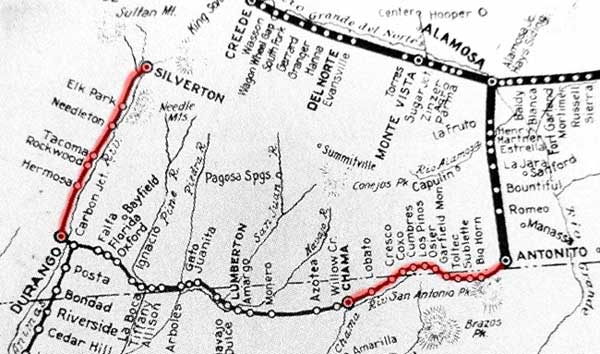
An 1880's map showing our Durango-Silverton route but also our earlier Antonito-Chama route on the Cumbres & Toltec steam train

The Animas River is 126 miles long. It starts high in San Juan Mountains of Colorado and flows south... through the Animas Canyon, past Durango and into New Mexico to its confluence with the San Juan River. Its name was first recorded in 1765 as "Rio de las Animas" (River of Souls) by Spanish explorer Juan Maria de Rivera.
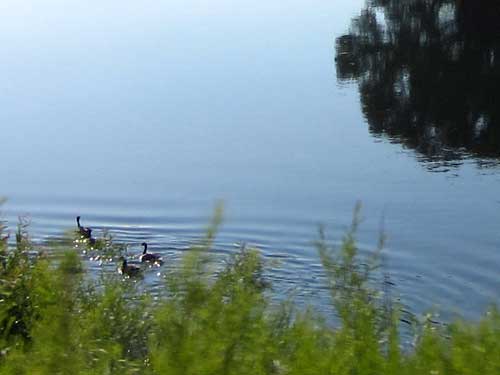
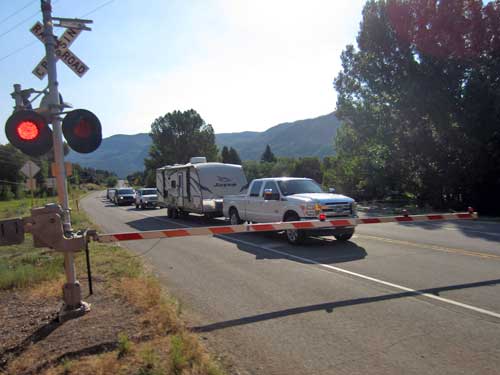
Leaving town


A prairie dog keeps a sharp eye on us.

A foal enjoys the lushness of summer.
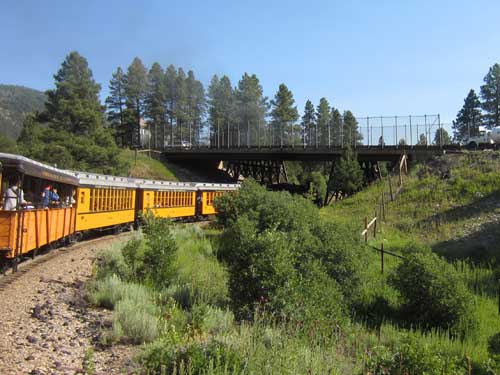
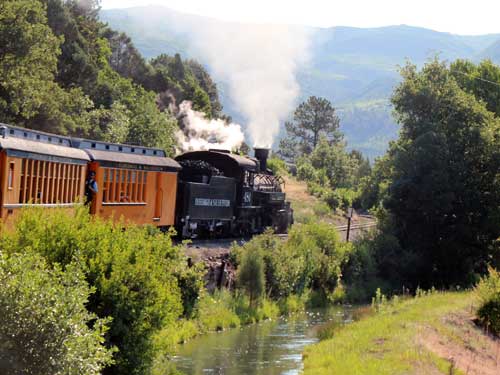
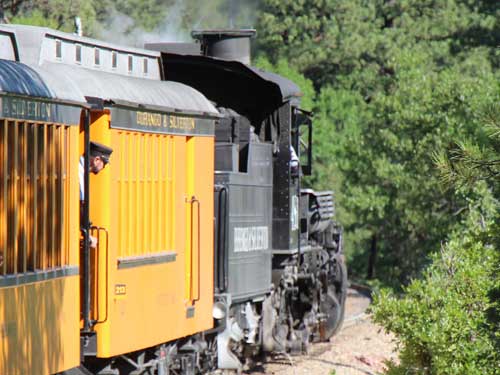

The 6.5 mile climb up Hermosa Hill at a 2.5% grade pulls us quickly up from the valley floor and above highway 550.

Bits of coal line the sides of the tracks
Steam trains are fueled by burning combustible material (usually coal, wood or oil) to produce steam in a boiler, which drives the engine. Both fuel and water are carried on the train. Steam locomotives were first developed in Great Britain during the early 19th century. Starting in the early 1900's, they were gradually replaced by electric and diesel locomotives.


Shalona Lake is a popular fishing spot.
Rockwood (named after pioneer Thomas Rockwood) was an established town before the arrival of the railroad. It was primarily a supply point for a 35-mile toll road that ran to the silver-mining town of Rico. Today it serves as a siding station (where trains can pass each other) and a passenger stop.



Retired boxcars that have seen better days.


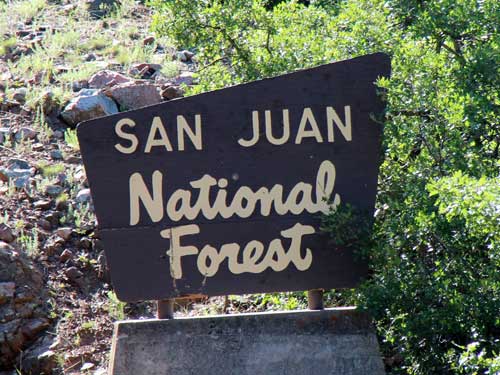
At mile marker 469.6, we reached a rock ledge 240 feet above the Animas River. The High Line, as it is known, was created by extensive black powder blasting. Area miners were often hired to do much of this work. To set the charges, workers were lowered over the granite cliff in harnesses. Fortunately there is no record of anyone getting killed.


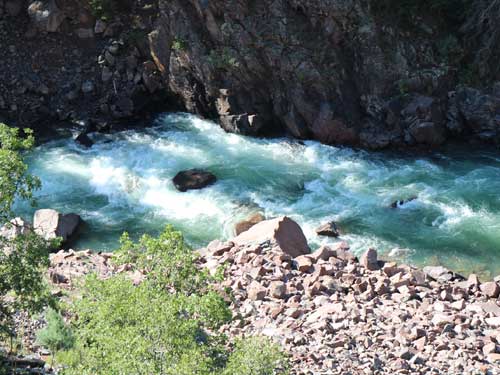
The river far below

A glimpse back
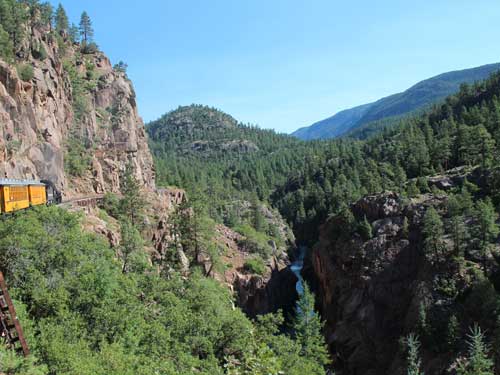

A mile marker
Why are the milepost markers numbered 451.5 (Durango) through 496.9 (Silverton)? This is the distance traveling westbound from Denver. These tracks were once part of the Denver & Rio Grande Railroad. Most of the line between Durango and Denver was abandoned in 1970.
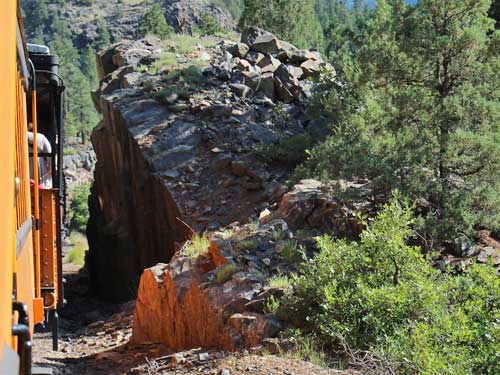

A marker of things to come...
High Bridge, at mile marker 471.23, is 190 feet long. It was built in 1894 from steel and timber to replace the 1881 version made of all wood.



Double the trouble??


return • continue

